
Jagdgeschwader 52 was a German World War II fighter Geschwader (wing) that exclusively used the Messerschmitt Bf 109 throughout the war. The unit originally formed near Munich in November 1938, then moved to a base near Stuttgart. JG 52 became the most successful fighter-Geschwader of the war, with a claimed total of more than 10,000 victories over enemy aircraft during World War II. It was the unit of the top three scoring flying aces of all time, Erich Hartmann, Gerhard Barkhorn and Günther Rall.

Between 1933 and 1945, the organization of the Luftwaffe underwent several changes. Originally, the German military high command, for their air warfare forces, decided to use an organizational structure similar to the army and navy, treating the aviation branch as a strategic weapon of war. Later on, during the period of rapid rearmament, the Luftwaffe was organized more in a geographical fashion.

Jagdgeschwader 54 Grünherz was a Luftwaffe fighter wing that was founded in late 1936 and operated from 1939, the entire length of the Second World War. It later existed under the reformed Luftwaffe from 1947 to 1991 as BG54/B54 A B and C. Originally, JG 54 flew most of its missions on the Eastern Front where it claimed more than 9,600 aircraft shot down. It was the second-highest scoring wing in the Luftwaffe after JG 52. Notable pilot aces (Experten) that flew with JG 54 included Walter Nowotny, Walter Boerner,Otto Kittel, Hans-Ekkehard Bob, Max-Hellmuth Ostermann, Hugo Broch, Horst Ademeit and Hannes Trautloft.

Jagdgeschwader 5 was a German Luftwaffe fighter wing during World War II. It was created to operate in the far north of Europe, namely Norway, Scandinavia and northern parts of Finland, all nearest the Arctic Ocean, with Luftflotte 5, created specifically to be based in occupied Norway, and responsible for much of northern Norway.

Jagdgeschwader 51 was a German fighter wing during World War II. JG 51's pilots won more awards than any other fighter wing of the Luftwaffe, and operated in all major theatres of war. Its members included Anton Hafner, Heinz Bär, Karl-Gottfried Nordmann, and Günther Schack.
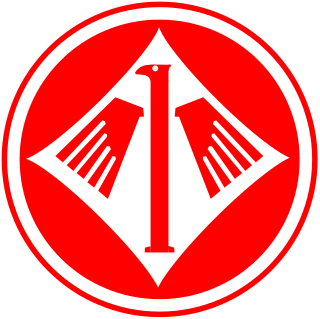
Jagdgeschwader 1 (JG 1) "Oesau" was a German World War II fighter wing created in 1939. Between 1940 and 1942, JG 1 operated primarily over the Western Front and northern occupied Europe. During the initial days of the war, JG 1 faced little resistance, apart from occasional Royal Air Force (RAF) excursions. The unit was rarely engaged in large-scale confrontations during this time.
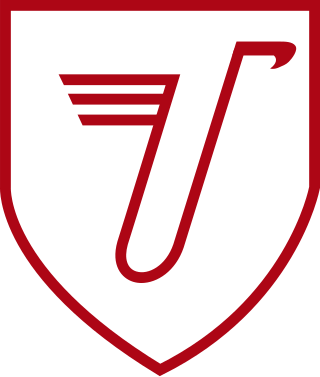
Jagdgeschwader 3 "Udet" was a Luftwaffe fighter wing of World War II. The Geschwader operated on all the German fronts in the European Theatre of World War II. It was named after Ernst Udet, an important figure in the development of the Luftwaffe, in 1942.

Jagdgeschwader 53 was a Luftwaffe fighter-wing of World War II. It operated in Western Europe and in the Mediterranean. Jagdgeschwader 53 - or as it was better known, the "Pik As" (Ace of Spades) Geschwader - was one of the oldest German fighter units of World War II with its origins going back to 1937. JG 53 flew the various models of the Messerschmitt Bf 109 throughout World War II.
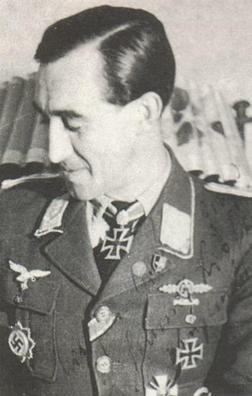
Helmut Lipfert was a German Luftwaffe fighter ace and recipient of Knight's Cross of the Iron Cross with Oak Leaves. Lipfert ranks as the world's thirteenth fighter ace. Lipfert was credited with 203 victories achieved in 687 combat missions. All his victories were claimed over the Eastern Front and included a P-51 Mustang, 41 Yakovlev Yak-1, 41 Yakovlev Yak-9 fighters, two four-engine bombers and 39 Ilyushin Il-2 ground-attack aircraft. He was shot down fifteen times, without being injured.
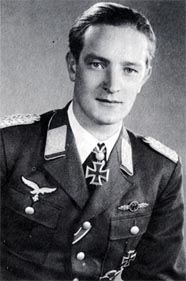
Friedrich-Karl "Tutti" Müller was a German Luftwaffe military aviator and wing commander during World War II. As a fighter ace, he is credited with 140 aerial victories claimed in more than 600 combat missions. He claimed eight aerial victories during the Battle of France, 89 on the Eastern Front, and further 43 victories against the Western Allies in the Mediterranean Theatre and in Defense of the Reich, including 24 four-engined bombers. He was "ace-in-a-day" four times, shooting down five or more aircraft on a single day.

Anton "Toni" Hackl was a German Luftwaffe military aviator during World War II, a fighter ace credited with 192 enemy aircraft shot down in over 1,000 combat missions. The majority of his victories were claimed over the Eastern Front, with 87 claims over the Western Front. Of his 87 victories over the Western Allies, at least 32 were four-engined bombers, a further 24 victories were unconfirmed.
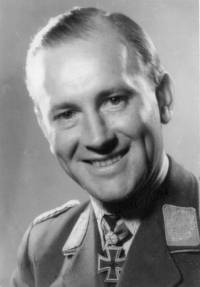
Johannes Wiese was a German Luftwaffe pilot during World War II, a fighter ace credited with 133 enemy aircraft shot down in 480 combat missions. He claimed all of his victories over the Eastern Front, including over 50 Ilyushin Il-2 Shturmovik ground attack aircraft.

Siegfried Freytag was a World War II German Luftwaffe pilot and wing commander. As a fighter ace, he was credited with 102 aerial victories of which 49 victories were claimed over the Eastern Front. Among his victories over the Western Front are at least 2 four-engine bombers. He was a recipient of the Knight's Cross of the Iron Cross Freytag had been nominated for the Knight's Cross of the Iron Cross with Oak Leaves, but the war ended before the paperwork had been processed.
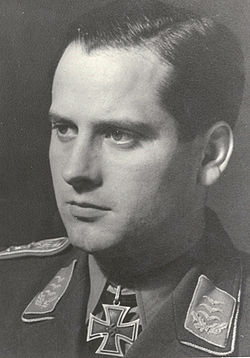
Gerhard Schöpfel was a German Luftwaffe military aviator and wing commander during World War II. As a fighter ace, he is credited with 45 aerial victories claimed in approximately 700 combat missions, all of which on the Western Front.
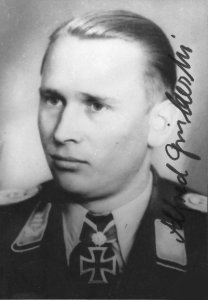
Alfred Grislawski was a German Luftwaffe military aviator during World War II, a fighter ace credited with 133 victories claimed in over 800 combat missions. The majority of his victories were claimed over the Eastern Front, with 24 claims over the Western Front. Of his 24 victories over the Western Allies, 18 were four-engined bombers.

Jagdgeschwader 4 was a Luftwaffe fighter wing of World War II.
Jagdgeschwader 300 was a Luftwaffe fighter-wing of World War II. JG 300 was formed on June 26, 1943 in Deelen as Stab/Versuchskommando Herrmann, from July 18, 1943 as Stab/JG Herrmann and finally renamed on August 20, 1943 to Stab/JG 300. Its first Geschwaderkommodore was Oberstleutnant Hajo Herrmann.
Jagdgeschwader 301 was a Luftwaffe fighter-wing of World War II. The order to form JG 301 was issued on 26 September 1943 and formed on 1 October 1943 in Neubiberg with Stab and three Gruppen (groups) as a "Wilde Sau" single-seat night fighter unit.
The Messerschmitt Bf 109 was a German World War II fighter aircraft designed by Willy Messerschmitt and Robert Lusser during the early to mid-1930s. It was one of the first true modern fighters of the era, including such features as all-metal monocoque construction, a closed canopy, a retractable landing gear, and was powered by a liquid-cooled, inverted-V12 aero engine.
Jagdgeschwader 234 was a fighter wing of Nazi Germany's Luftwaffe in World War II. It operated during peacetime and conducted formation flying, simulated aerial combat, and firing on ground targets. Many of its pilots came from Jagdgruppe 88 operating in Spain during the Spanish Civil War.
















